June 5, 2025 | 00:38 GMT +7
June 5, 2025 | 00:38 GMT +7
Hotline: 0913.378.918
June 5, 2025 | 00:38 GMT +7
Hotline: 0913.378.918
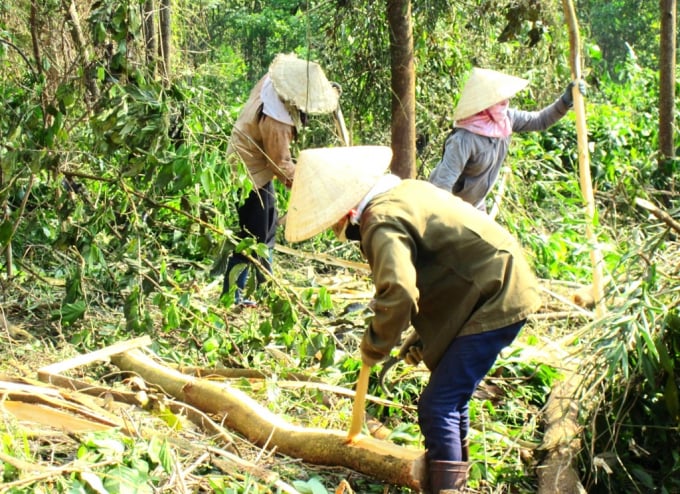
Most of the households' forests have been exploited young wood to sell to woodchip processing factories for export, with very low economic efficiency. Photo: Vu Dinh Thung.
According to Mr. Tran Van Phuc, Director of the Department of Agriculture and Rural Development of Binh Dinh province, the total forest and forestry land area is 417,485 hectares. The forested land area is 335,120 hectares, including 216,196 hectares of natural forest and 118,924 hectares of planted forest (70,540 hectares of production plantation and nearly 48,500 hectares of protection plantation). Therefore, it is a favorable condition and has great potential to develop the forestry economy for Binh Dinh province.
Until now, most of the households' forests have been exploited young wood to sell to woodchip processing factories for export, with very low economic efficiency. So forest resources are wasted. Forest planters are disadvantaged in terms of income.
If the 5-year-old plantation has been exploited, the average revenue of the afforest is VND 120 million per hectares. But if the planted forest is ten years old, the income can reach VND 250 million per hectares.
In taking care of large wooden trunk forests, growers only spend extra effort to protect. Because from the 5th year onwards, the forest needs very little fertilizer but has a fast growth rate. Better wood quality, higher wood density. Exploiting one block of young wood only reaches 0.7 tonnes, but exploiting large one block gets 1 tonne.
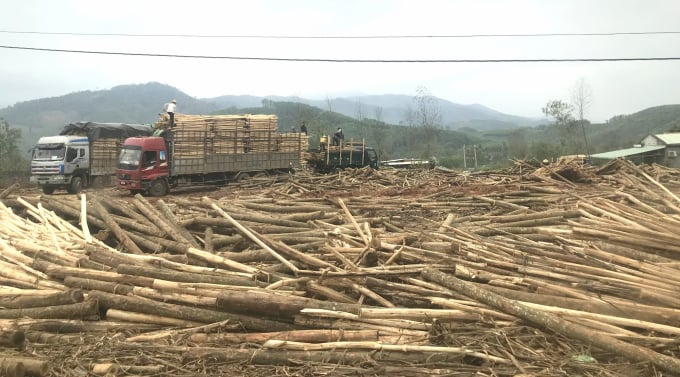
The raw material of young wood is currently only priced at VND 900,000 per tonne, at the highest of VND 1.2 million. Photo: Vu Dinh Thung.
To avoid wasting forest resources, promote strengths in forestry, and improve economic efficiency from planted forests, since 2018, the People's Committee of Binh Dinh province has issued Decision No. 2440/QD-UBND for approval. "Project on development of large wooden trunk trees in the province for the 2016 - 2020 period, with a vision to 2035", to own 30,000 hectares of large wooden trunk forests with the sustainable forest management certification (FSC). From now to 2025, Binh Dinh province will form 10,000 hectares of large wooden trunk forests in the immediate future.
Currently, in Binh Dinh, three units are Quy Nhon Forestry Company Limited (Quy Nhon City), Ha Thanh Forestry Company Limited (Van Canh District), and Song Kon Forestry Company Limited (Vinh Thanh District). Currently, 2,700 hectares have been converted into large wooden trunk forests.
According to Mr. Nguyen Tuan Thanh, Standing Vice Chairman of the People's Committee, Binh Dinh province has taken forestry companies as the leading model to implement the above project.
Quy Nhon Forestry Company Limited is the first unit in Binh Dinh province to invest in planting large wooden trunk forests in a closed chain, meeting strict regulations according to international standards.
"The Department of Agriculture and Rural Development is the one implementing the large wooden trunk forest development project, continuing to replicate the model of sustainable forest management, moving towards forming a forestry production value chain from high-quality seedlings and afforestation, exploitation, processing, and export," Mr. Nguyen Tuan Thanh shared.

One model of intensive afforestation using tissue culture hybrid acacia varieties in Canh Hien commune (Van Canh District, Binh Dinh). Photo: Vu Dinh Thung.
From 2020 up to now, with the support of the Central Agricultural Extension Project, the Agricultural Extension Center of Binh Dinh province has coordinated with the Agricultural Service Center of Van Canh district and the authorities of Canh Hien, Canh Hiep communes, Canh Hoa implemented a model of planting 95 hectares of large wooden trunk forests using tissue culture hybrid acacia varieties, with 28 households participating.
As a result, from 40 hectares of large wooden trunk plantations in 2020, 55 hectares will be planted in 2021 in Canh Hiep and Canh Hoa communes. It is the first large wooden trunk plantation model in Binh Dinh province, where the forest owner is a household. In participating, households are supported by the project with 100% of AH1, BV75 seedlings, fertilizers, and techniques.
According to the assessment of Binh Dinh Department of Agriculture and Rural Development, planted forests in 2020 have a survival rate of over 95%, trees growing and developing are superior to those produced by people outside the model. In addition, the planted forest in the model is almost free of pests and diseases; the tree has a trunk diameter of 2-3 centimeters and a height of 2.5 meters or more.
Mr. Do Duy Thuy (Van Canh district) said that large wooden trunk forests have up to 10 years, so they must avoid outside influences when planting forests. Therefore, Mr. Thuy and six other households planted indigenous trees to block the wind to keep the forest safe in the rainy season.
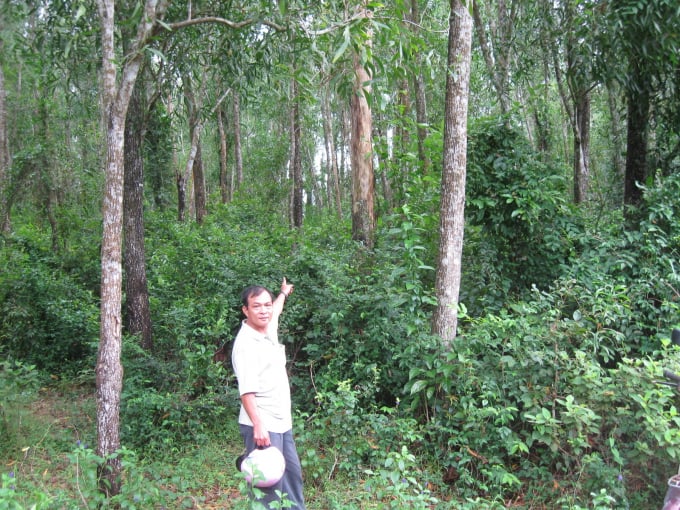
A large wooden trunk forest in Binh Dinh province. Photo: Vu Dinh Thung.
According to Mr. Cai Minh Tung, Chairman of the Board of Directors of Ha Thanh Forestry Co., Ltd., the selection of seedlings is critical in planting large wooden trunk forests. Forests must be taken care of on time, in the right season. During the cycle, the tree must be fertilized at least once.
"Using tissue culture plants, forests develop with very high uniformity; withstand the wind and storm; resist pests and diseases very well, especially forest trees overgrow," said Mr. Tung.
In the 2017 afforestation crop, Ha Thanh Forestry Company Limited planted 400 hectares of forest with tissue culture varieties; only two years later, the forest mentioned above area was 4-5 meters high. Currently, the forest has overgrown compared to other forests planted at the same time that are not produced with tissue culture varieties.
"The company plans to plant 1,000 hectares of large wooden trunk forests. By 2030, the exploitation cycle will be closed. Although every year, we exploit about 100 hectares, the output will be equivalent to 300 hectares compared to before. In addition, the value of large wooden trunk forests is increased by 30%," said Mr. Cai Minh Tung.
In the coming time, Binh Dinh province will continue to implement a large wooden trunk plantation development project and strive to have more and more FSC certified plantation areas. Therefore, the People's Committee proposed related sectors and local leaders to strengthen propaganda work to raise awareness for forest owners to achieve the above goal.
Translated by Ha Phuc
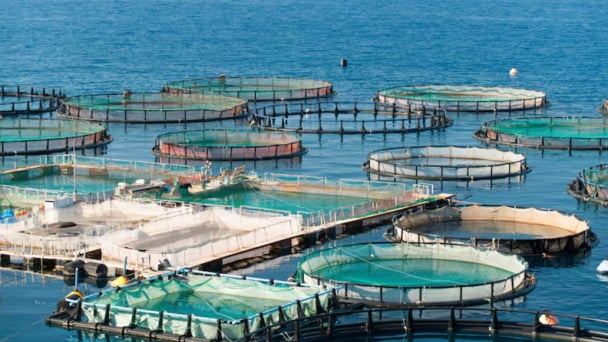
(VAN) Technology is redrawing the map of Vietnamese aquaculture: more modern, greener, and more sustainable.
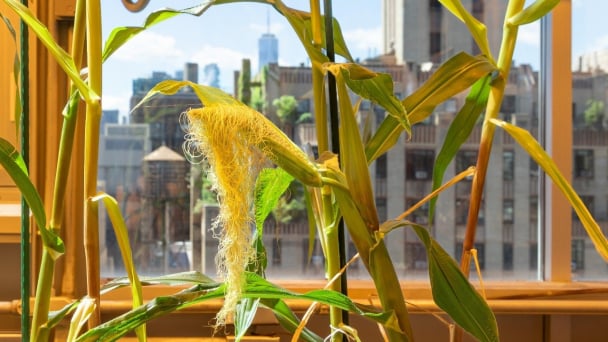
(VAN) Novel process harnesses machine learning to reveal groups of genes that determine how efficiently plants use nitrogen.

(VAN) Several scientists and farmers are experimenting with soil treatment in some key durian-growing regions such as Cai Lay (Tien Giang), Dak Song, Gia Nghia, and Dak R’lap (Dak Nong).
/2025/05/25/4127-3-073637_820.jpg)
(VAN) Thanks to the promotion from an FAO-implemented project, vegetable production in greenhouses in Moc Chau has seen strong development, from 1.5 hectares in 2021 to nearly 50 hectares in 2024.

(VAN) FAO has recently supported USD 140,000 to implement the project 'Risk mitigation human-animal interface risks through disease control initiatives in pig farming.'

(VAN) The People's Committee of Tra Vinh province has approved an adjustment to the investment policy for the Green Hydrogen Plant project, increasing its area to approximately 52.76 hectares.
![Reducing emissions from rice fields: [2] Farmers’ commitment to the soil](https://t.ex-cdn.com/nongnghiepmoitruong.vn/608w/files/news/2025/05/05/dsc08881jpg-nongnghiep-140632.jpg)
(VAN) Clean rice cultivation model in Thuong Tan commune, Bac Tan Uyen district, is assisting local residents in achieving sustainable agriculture by substantially reducing costs, increasing productivity, and protecting the environment.